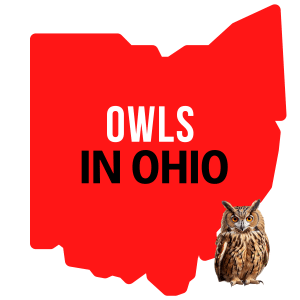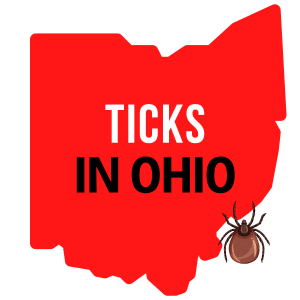Woodpeckers In Ohio
This post contains links to affiliate websites, such as Amazon, and we receive an affiliate commission for any purchases made by you using these links.
There are seven common species of woodpeckers in Ohio. You will likely spot woodpeckers in every part of the state, in parks, along trails, and even in the backyard on the birdfeeder!
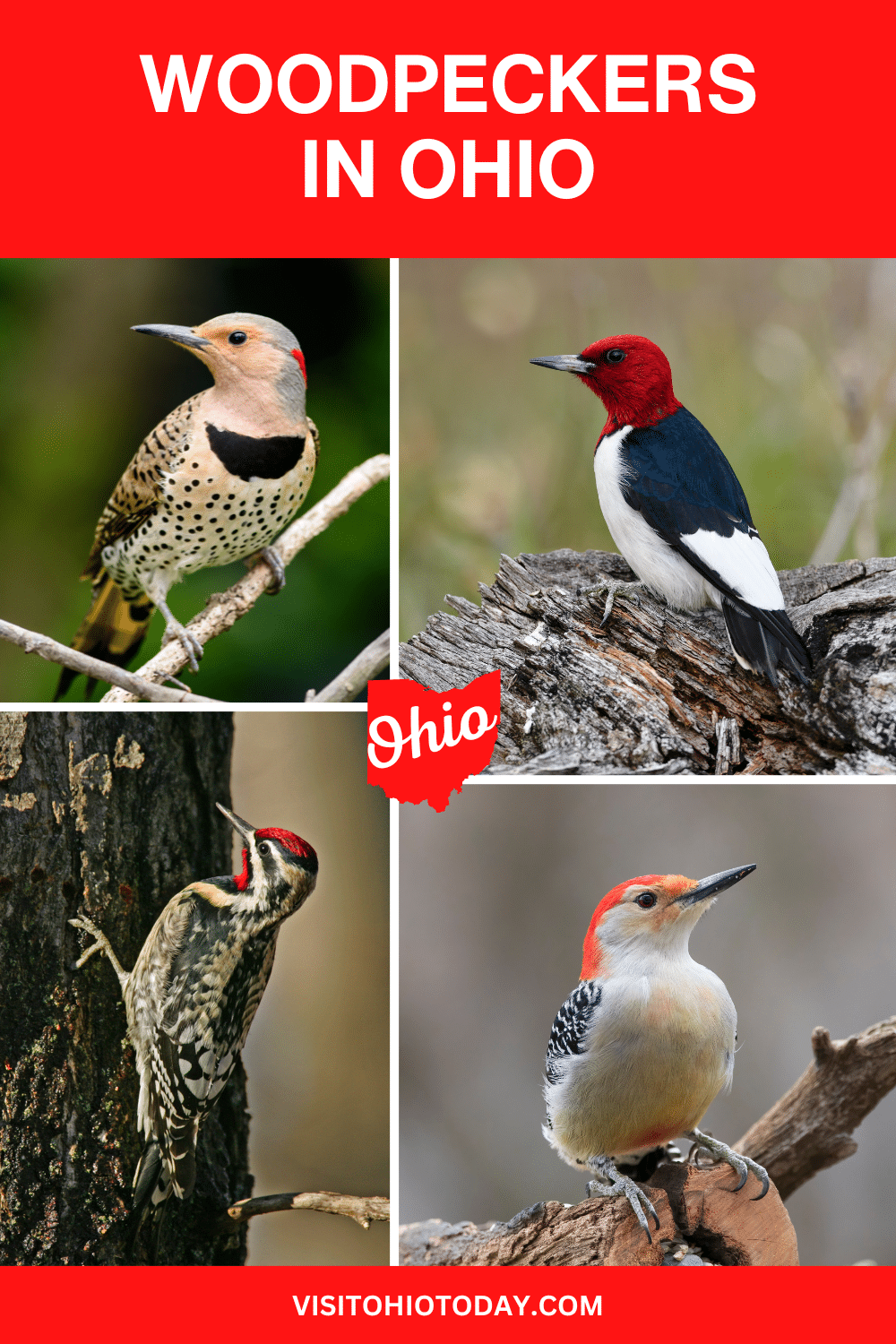
About Woodpeckers in Ohio
Of the seven species of woodpeckers in Ohio, five are permanent residents, and only two species migrate. It is rare to find other species in the state, but not entirely unknown.
Woodpeckers have some unique adaptations that set them apart from other birds. They have strong legs and sturdy, stiff tail feathers. These adaptations allow them to perch on the sides of trees and the tail helps to support their weight.
Most birds have three toes facing forward and one facing backward. Woodpeckers have the first and fourth toe facing backward and the second and third facing forward, helping them to grip the tree. The woodpecker’s skull structure is adapted to protect the brain while they repeatedly peck at tree trunks.
Cindy’s Insider Ohio Tips!
Did you know that woodpeckers actually prefer dead or dying trees because they are insect magnets? Woodpeckers use their bills for both drilling and drumming. Drilling is carried out to make holes in trees to find food or for nesting. Drumming is done in spring to attract a mate or to mark territory.
Downy Woodpecker
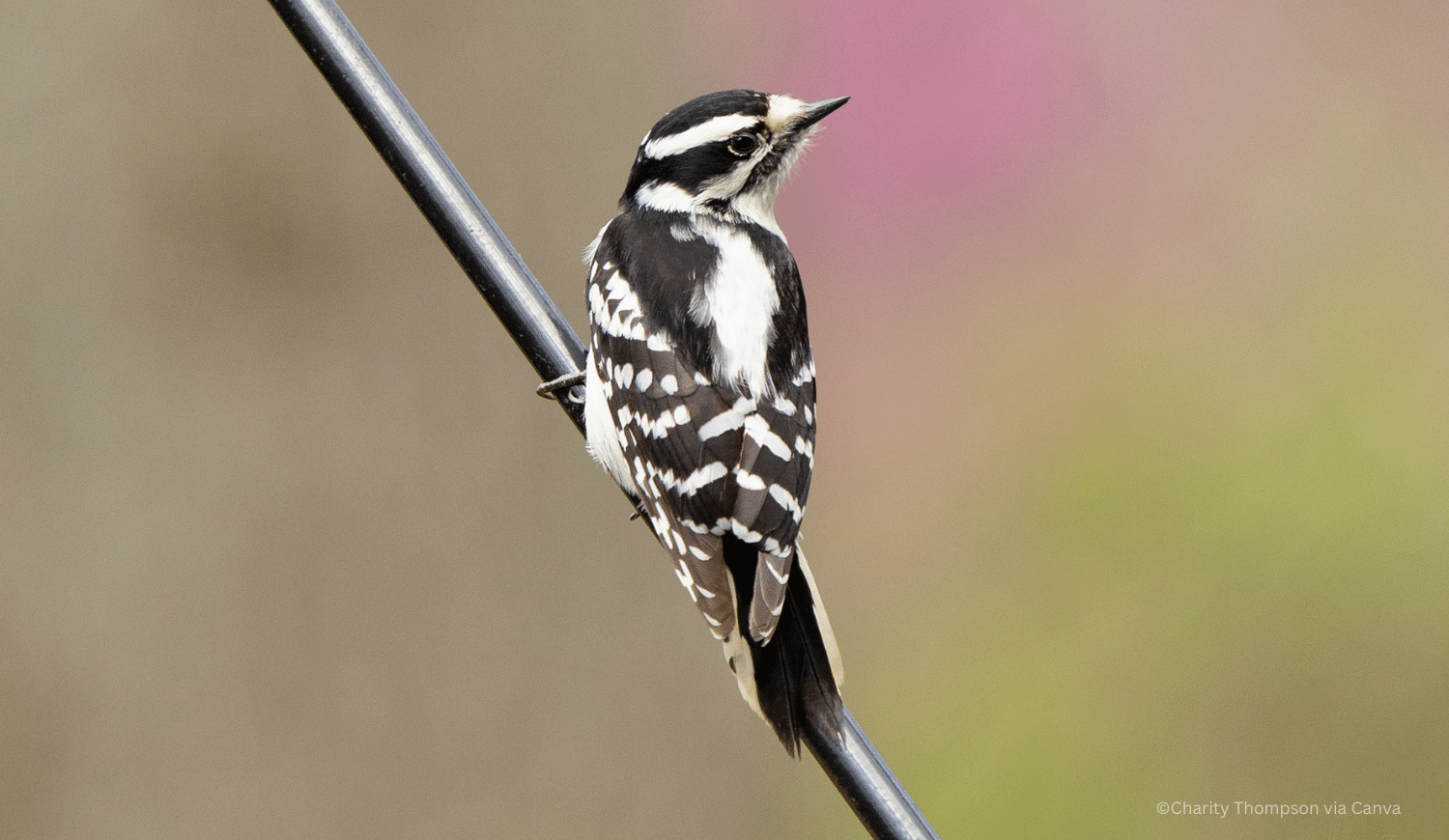
Dryobates pubescens | Length: 6¾ inches | Wingspan: 12 inches
The Downy Woodpecker is the smallest of all the woodpecker species in North America, it is slightly bigger than a sparrow. It has black and white plumage with bold markings on the head and wings and a white belly. Males have a small red patch on the back of the head.
This species is a regular backyard visitor and happily lives in urban areas with trees. They will come to bird feeders and enjoy suet, sunflower seeds, peanuts, and berries. They can also be seen foraging with flocks of other small birds such as chickadees.
Hairy Woodpecker
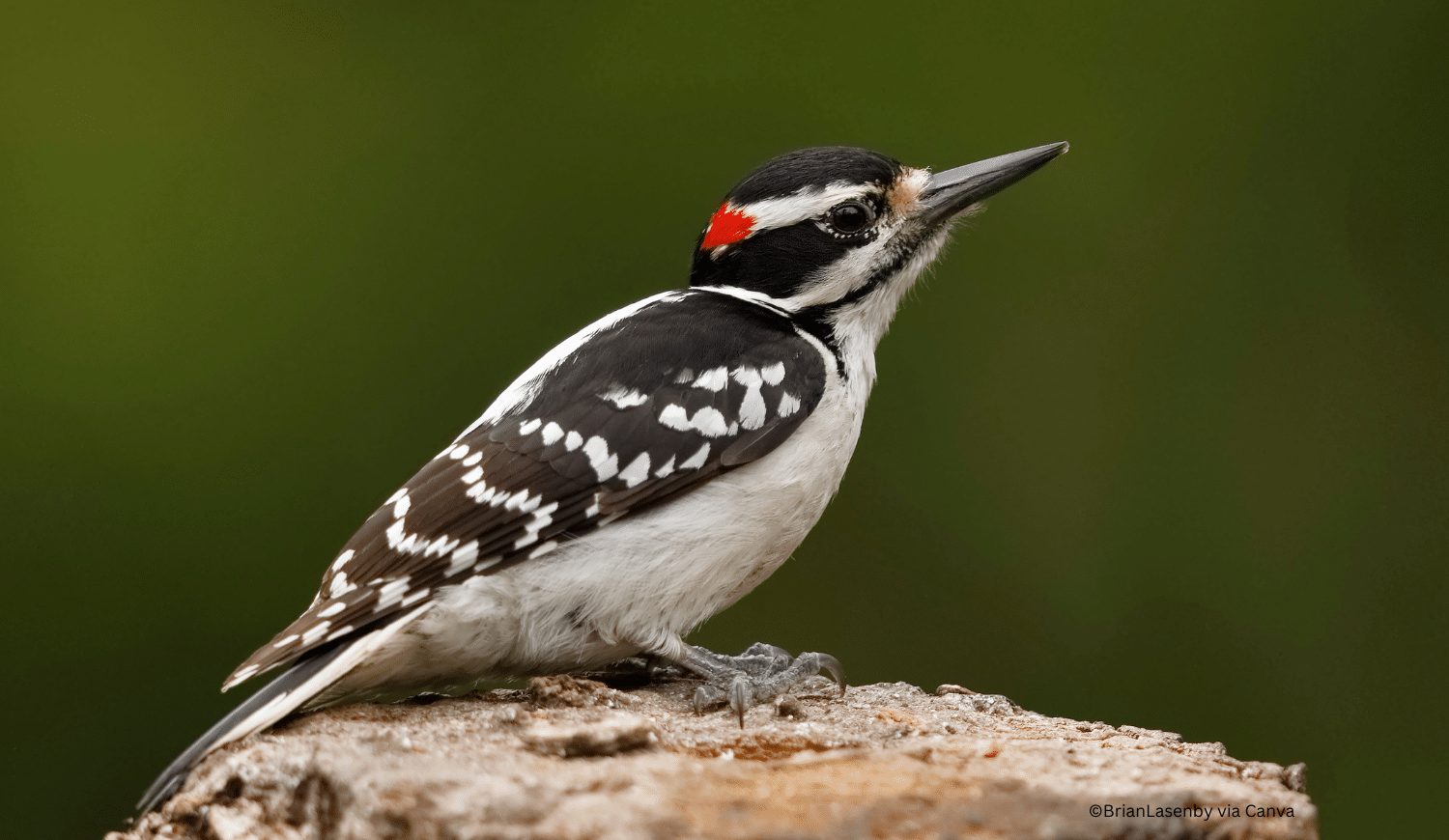
Dryobates villosus | Length: 9¼ inches | Wingspan: 15 inches
The Hairy Woodpecker has plumage coloring almost identical to the Downy Woodpecker. The main difference is the size of these two species, the Hairy Woodpecker is significantly larger. However, if you are not seeing both birds together, size can be difficult to gauge, so the other difference is the bill. The Downy Woodpecker has a short, dainty bill, adding to its cute look. The Hairy Woodpecker, however, has a long, straight bill that gives it a harsher look.
This species is mostly found in forests as they like big trees, but they can be found in wooded suburban areas. They do visit feeders, especially for suet.
Northern Flicker Woodpeckers
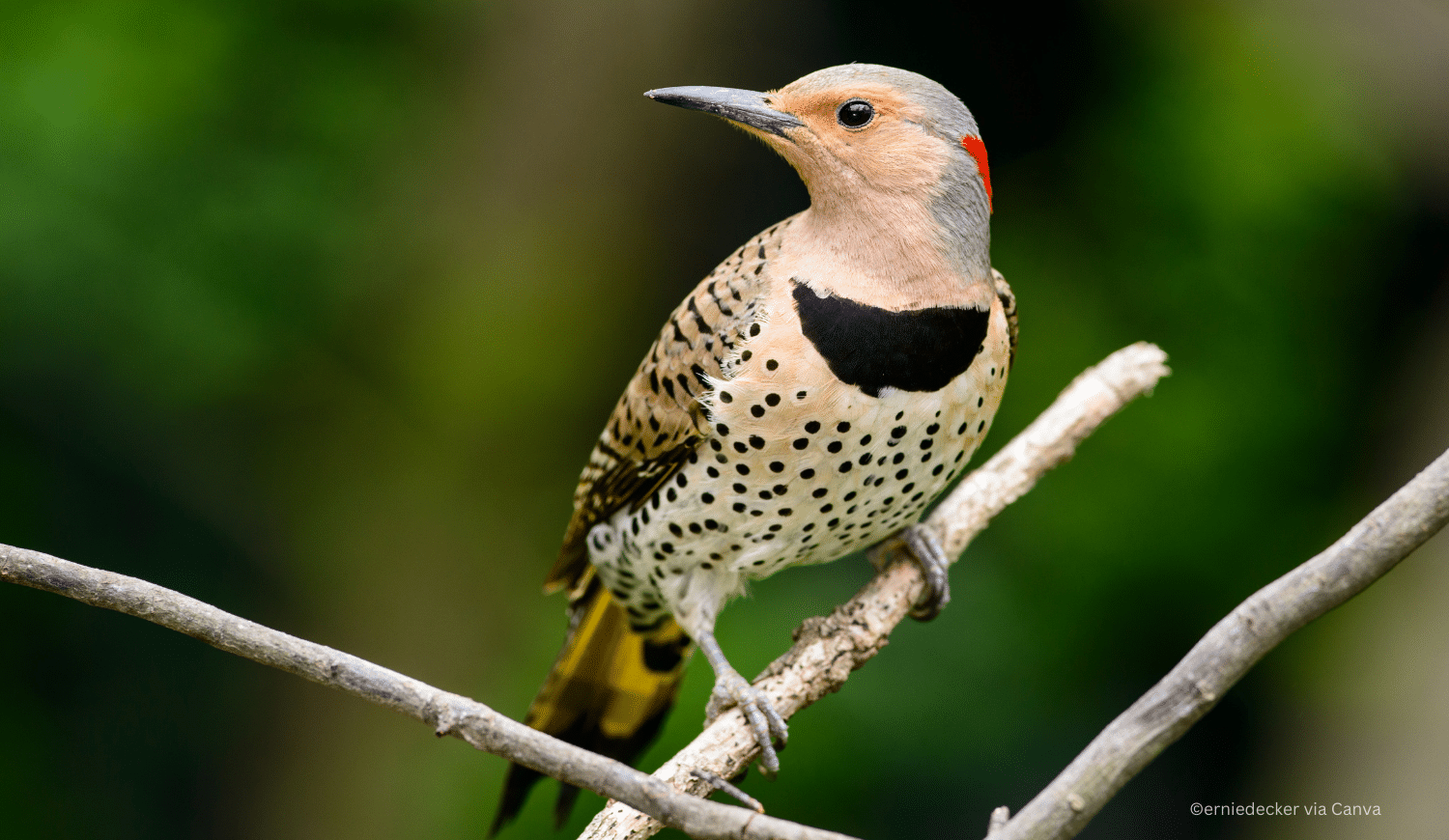
Colaptes auratus | Length: 12½ inches | Wingspan: 20 inches
The Northern Flicker Woodpecker has some different markings depending on where it lives. In Ohio, there is a small red spot on the nape of the neck and the males have a black mustache mark. They also have bright yellow underwings. This subspecies is known as the Yellow-shafted or Red-shafted Flicker.
This is a large gray and tan woodpecker with a cream underside with black spots. There is a black patch on the chest and fine black bars on the back and wings. The Northern Flicker is the only woodpecker with gray and tan plumage.
Northern Flickers enjoy suet feeders but do not visit them too often. They forage on the ground for ants. During winter they mainly eat fruit and seeds. They are noisy birds and make laughing calls and other vocalizations.
Pileated Woodpecker
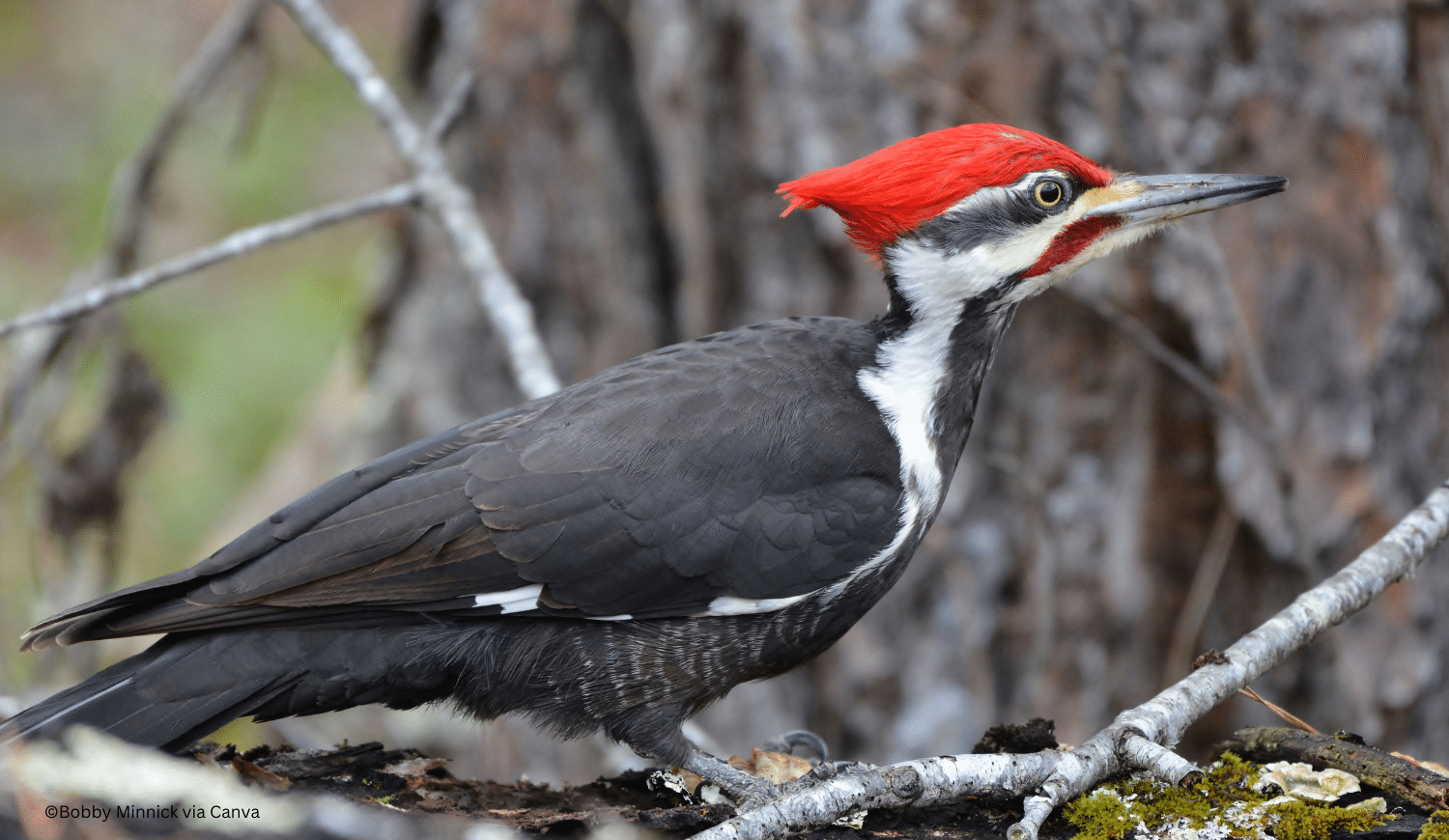
Dryocopus pileatus | Length: 16½ inches | Wingspan: 29 inches
The Pileated Woodpecker is the largest species in Ohio, in fact, assuming the Ivory-Billed Woodpecker is not extinct, it is the second-largest woodpecker in North America.
This bird is mainly black with a white stripe on each side of the neck and a white throat. They have a red crest and a long beak. Males have a short red stripe from their beak and females have a black line from their beak to their neck.
Pileated Woodpeckers live in forests with big, mature trees, they are rarely seen in urban areas, although they will visit feeders at houses near the forest.
Red-Bellied Woodpecker
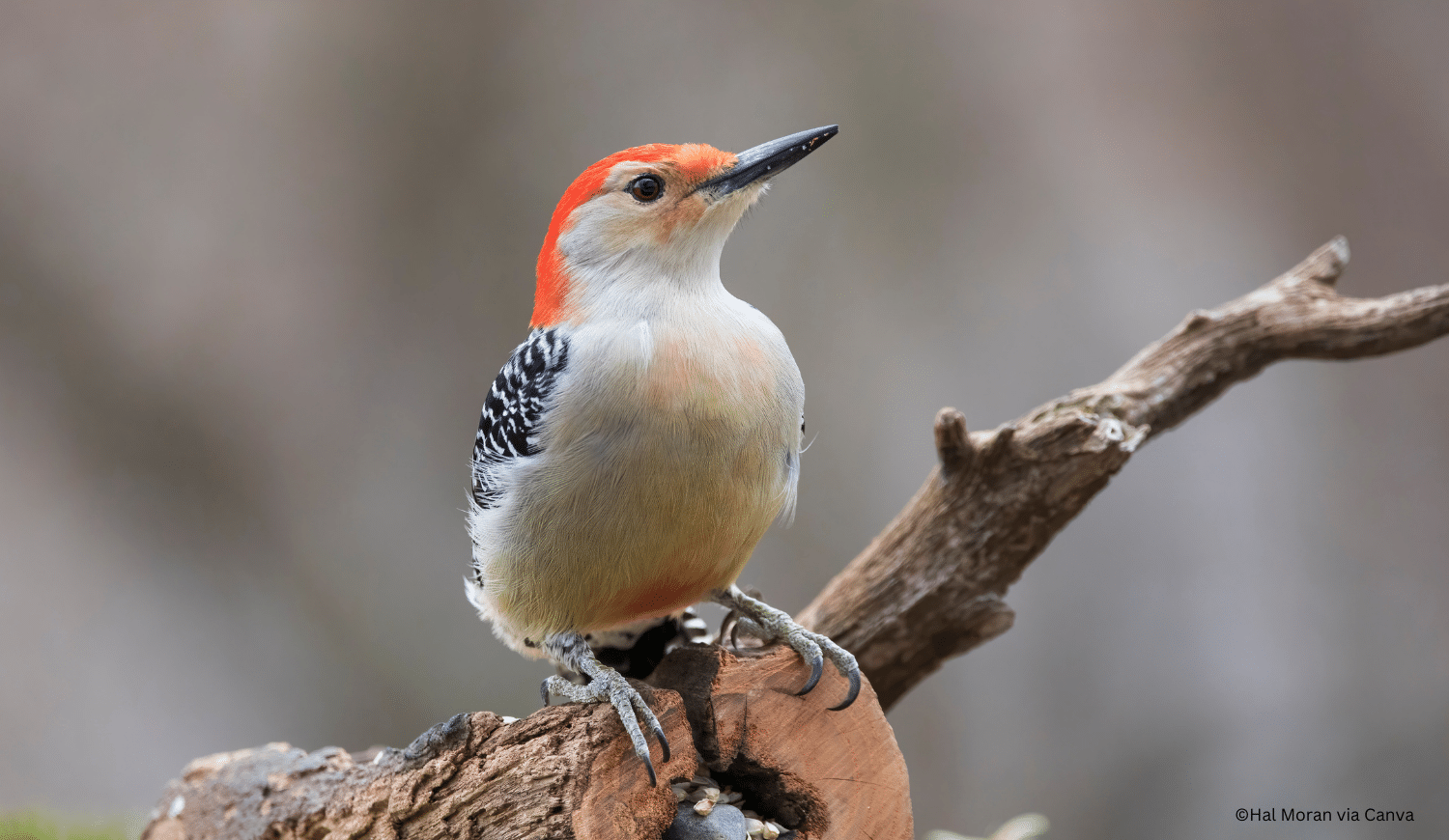
Melanerpes carolinus | Length: 9¼ inches | 12 inches
Despite their name, Red-Bellied Woodpeckers only have a little red on their bellies which can be difficult to spot. This species has a pale gray face with a little orange above the beak. The male has a bright red cap and the female has red on the nape of the neck. There is black and white barring on the back and wings.
These woodpeckers will live in well-wooded urban areas as well as forests, and will often visit feeders.
Red-Headed Woodpeckers
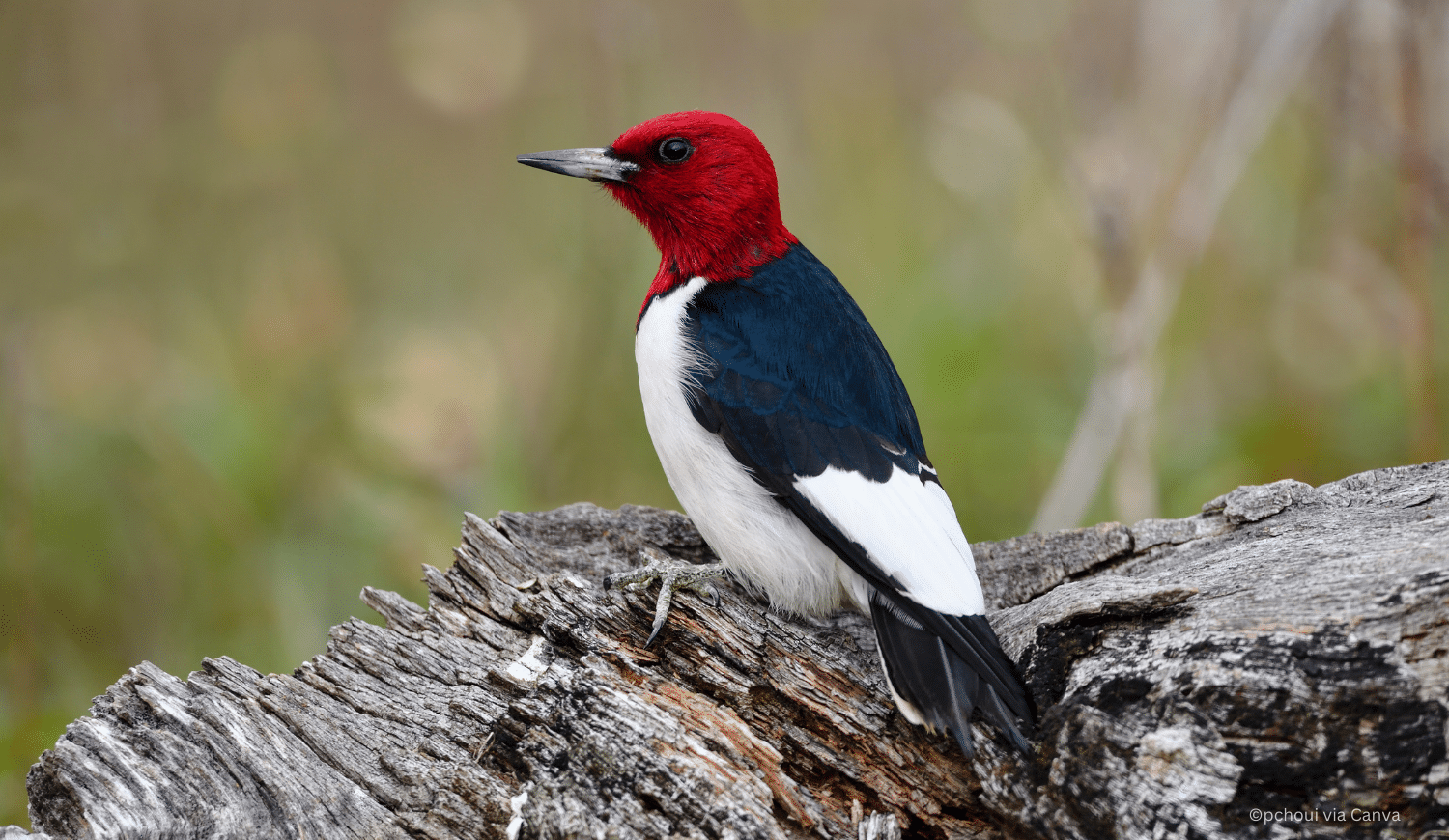
Melanerpes erythrocephalus | Length: 9¼ inches | Wingspan: 17 inches
The Red-Headed Woodpecker lives up to its name – it has a completely red head! There is no difference in color between males and females of this species. They have a black back and wings with large white patches on the wings. The belly is bright white. This is one of the most striking-colored woodpeckers in the US.
This species prefers open areas with big trees such as riverbanks and other wetlands.
Yellow-Bellied Sapsucker Woodpecker
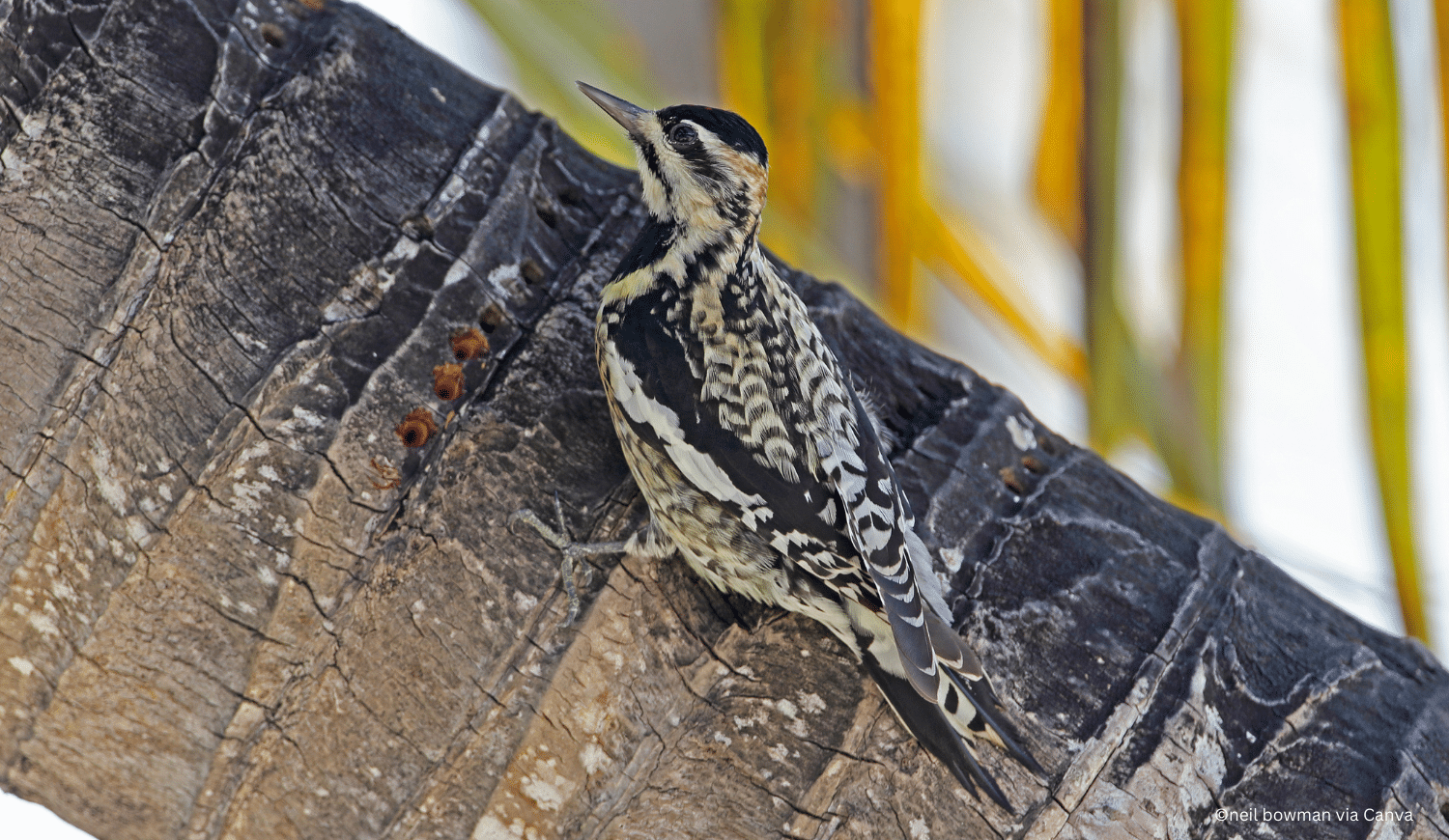
Sphyrapicus various | Length: 8½ inches | Wingspan: 16 inches
The Yellow-Bellied Sapsucker looks very different from other woodpecker species, their plumage looks speckled with some stripes on the wings and tail. There is a little yellow on the underside. Males have a red throat bordered with black, and females have a white throat.
This species does not usually spend the breeding season in Ohio, but they have been spotted in the summer months.
This bird lives up to its name by drilling lines of small holes in trees and drinking the sap that the holes secrete as well as the insects attracted to the sap.
Short Video Highlighting The Woodpeckers In Ohio:
If you love animals, check out our articles on Animals In Ohio!
Spotting Woodpeckers in Ohio
Have you spotted any woodpeckers in Ohio? We would love to know! Leave a comment below and share your experience.
Ohio Turtles are fascinating creatures, and you can read all about them in our dedicated article! If you love birds, check out our Hummingbirds in Ohio article.
If you have favorite Animals In Ohio that we have not mentioned, let us know about them in the comments. Who knows – we may feature them sometime!
Hello! We have done our very best to ensure that the accuracy of events, hours, addresses, etc, are up to date. Please know that information can change due to weather, updated health and safety challenges, etc. If you find incorrect information, please send us an email at [email protected], and we can get it updated.
To be updated and stay connected, subscribe to our newsletter.



